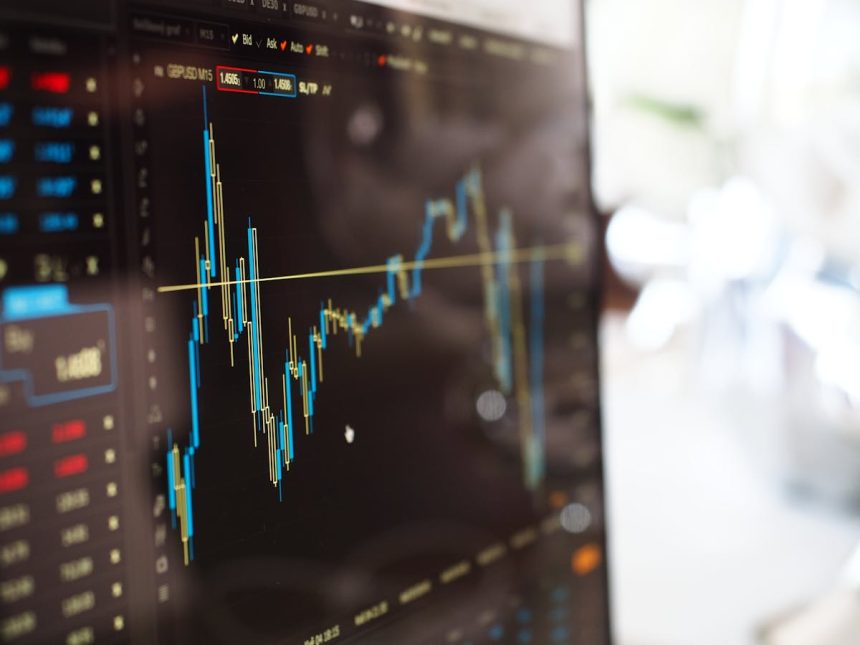US stocks saw a positive start to the week, closing higher as optimism grew surrounding the potential end of the government shutdown. Over the weekend, the US Senate took important steps by advancing a bill aimed at reopening the government, which coincided with encouraging developments in US-China trade relations.
Both mega-cap sectors, including Technology, Communications, and Discretionary, showed robust performance, with all seven major tech companies, often referred to as the ‘Mag-7’, recording gains. In contrast, the Consumer Staples sector was among the few that struggled, reflecting a more diversified market environment.
As trading commenced, the US dollar weakened slightly against this backdrop of risk-on sentiment, attributed to a mix of positive trade news and progress on the shutdown. The Senate’s weekend vote was a significant milestone, as House Speaker Johnson expressed urgency to schedule a vote for Wednesday on the stopgap funding bill. Meanwhile, Senate Majority Leader Thune stated that the vote was in a ‘holding pattern,’ leaving the timing uncertain.
Looking forward, important economic indicators are on the horizon, including the Australian Westpac Consumer Sentiment report, NAB Business Confidence, Japan’s Current Account Balance, and New Zealand’s Inflation Expectations, among other data.
In terms of market performance during the trading session, the S&P 500 index rose by 1.54%, closing at 6,832, the Nasdaq Composite surged by 2.20% to 25,612, the Dow Jones Industrial Average increased by 0.81% to 47,369, and the Russell 2000 gained 0.97% ending at 2,456.
In the realm of trade, President Trump indicated that negotiations with India are progressing and differ from previous discussions. He remarked on Truth Social, “The ‘Pay Back’ Number on tariffs… are much higher than those being stated by our Fake Opposition…would be in excess of $2 Trillion Dollars.” This statement echoed the administration’s strong stance on tariffs.
China’s Commerce Ministry responded to the US suspension of some tariffs, viewing it as a crucial step towards realizing mutual agreements, and expressing hope for ongoing cooperation. They also announced new regulations concerning the licensing of certain chemical exports, specifically targeting the US, Canada, and Mexico.
Furthermore, European Union officials are reportedly considering a ban on Huawei’s involvement in the mobile networks of member countries, with the European Commission exploring making its 2020 guidance on excluding high-risk telecom vendors more legally binding.
In trade negotiations, Switzerland is close to an agreement that would reduce US tariffs on its exports from 39% to 15%. This development follows discussions between Swiss executives and President Trump, who has urged for accelerated talks, hoping to alleviate the economic challenges resulting from high tariffs.
Notable statements from Federal Reserve officials included Fed’s Miran, who indicated that a potential resolution to the government shutdown would not significantly alter his outlook, suggesting a 50 basis point rate cut in December is still probable unless new information arises. Miran emphasized a need for a forward-looking monetary policy.
Fed’s Musalem highlighted the US economy’s resilience, citing the substantial drop in real rates over the past year and urging caution in future policy adjustments. Daily comments echoed a balanced view, indicating the need for vigilance against inflation risks while remaining open to the potential for stronger economic growth.
Senate Majority Leader Thune confirmed that discussions on a stopgap funding package would be forthcoming, expressing hope for prompt action while emphasizing other appropriations bills and potential deals related to the Affordable Care Act.
In commercial news, the Treasury Department announced new guidance that would allow cryptocurrency exchange-traded products (ETPs) to stake digital assets on behalf of retail investors, opening new avenues in the crypto market.
Apple Inc. faced some challenges as it reportedly delayed the release of its next-generation iPhone Air, leading to cutbacks in production at its manufacturing partners.
On the economic front, recent data pointed to a deceleration in consumer durables and personal goods inflation in the US for October, indicating a potential shift in consumer price dynamics.
In the foreign exchange market, the US dollar saw slight weakness as investor confidence rose, benefiting the Euro and British pound, while the Japanese yen weakened as risk appetite grew. This trend illustrated broader market movements amid financial optimism.
Fixed income assets faced pressure as T-notes dropped, reflecting a risk-on sentiment fueled by hopes of government reopening. However, oil prices saw modest gains amid volatile trade conditions, further influenced by geopolitical developments.
In geopolitical news, Israeli Prime Minister Netanyahu affirmed a strong stance on the ceasefire arrangements, while discussions continued about disarming Hezbollah in Lebanon. Russia responded to President Trump’s comments on potential peace in Ukraine, reiterating their willingness to resolve the conflict through diplomacy, although progress remains stalled.
In Asia, China announced measures aimed at enhancing private investment in sectors like rail and nuclear power, working towards reducing barriers for private enterprises. Japan is eyeing a comprehensive economic package focusing on critical industries to boost revenue without raising taxes.
As the global economic landscape evolves, these developments underscore the interconnectedness of trade, policy decisions, and market reactions across regions.





